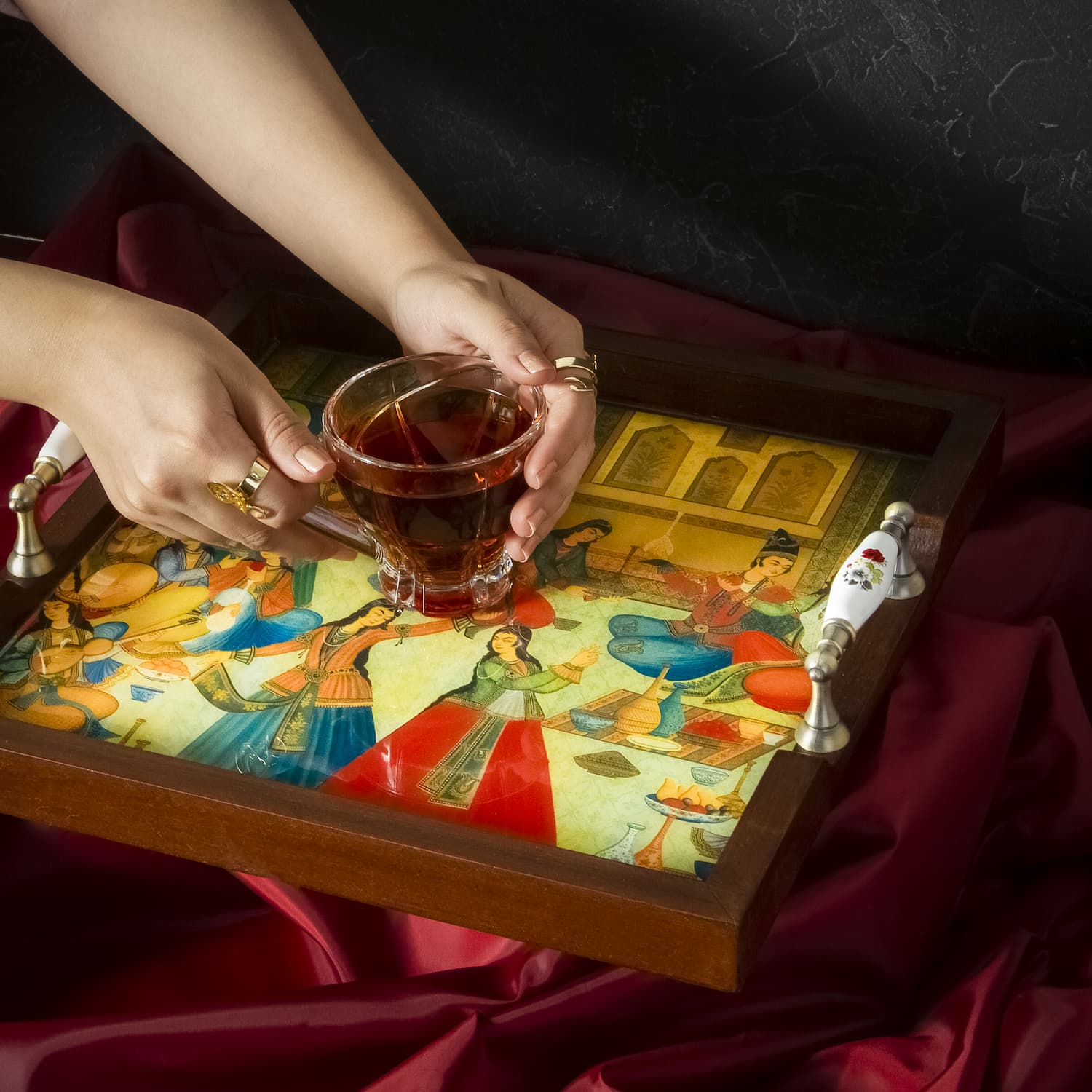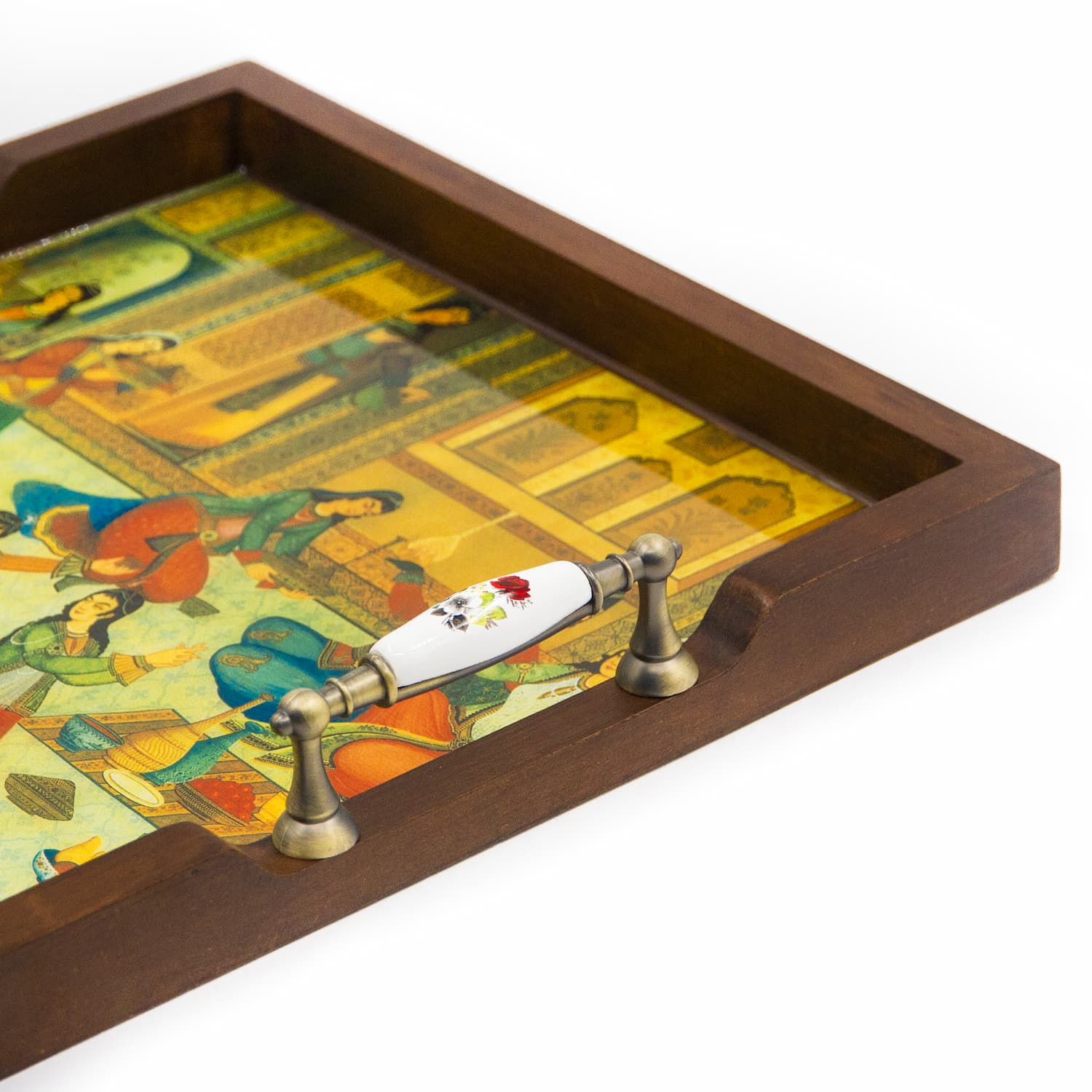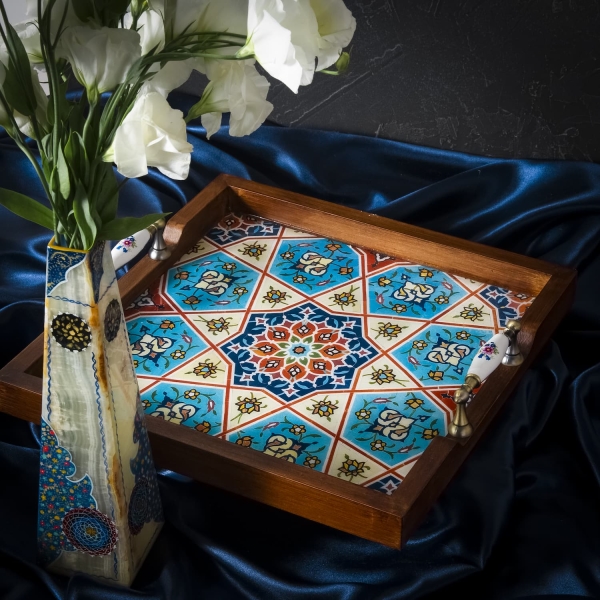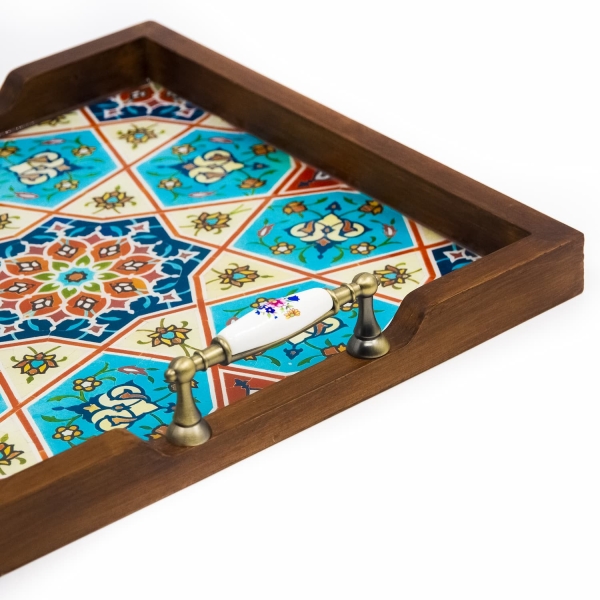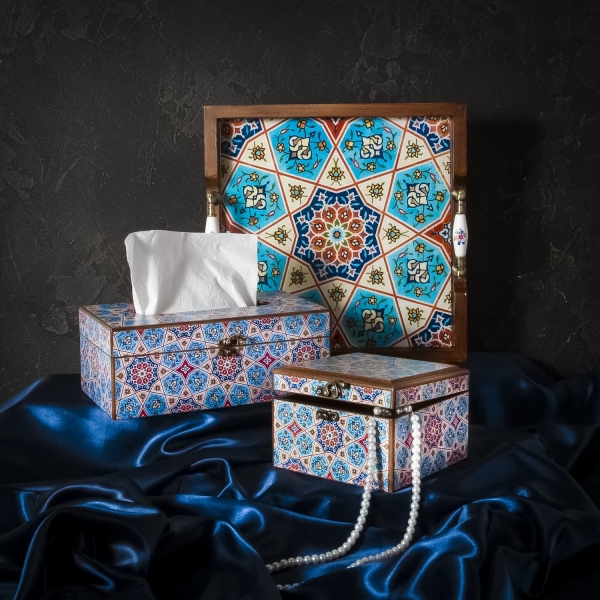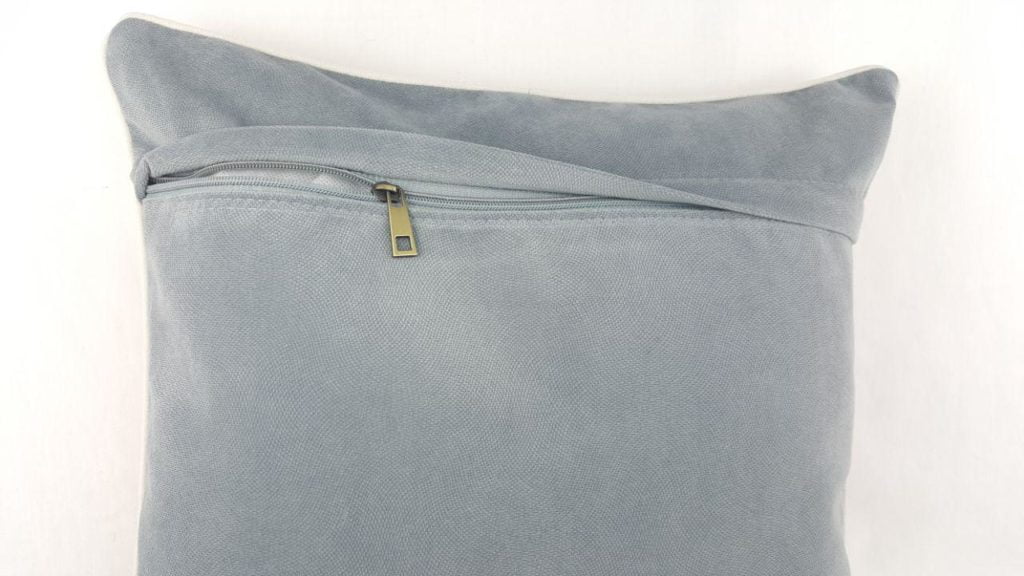BANQUET PATTERN WOODEN TRAY
Banquet Pattern Wooden tray made by an Iranian artist and inspired by the beautiful designs of ancient Iran.
A beautiful art tray that brings beauty to your home and kitchen.
- Wood material: MDF
- Tray floor material: resin
- Category Material: Ceramic
- Style: Eslimi
- Size: 30*30 cm
“Eslimi” in Persian Architecture is an engaging and unknown art in Persia/Iran. It can be found in many doors and windows in historic and old buildings. From the outside, a combination of wooden curved parts creates many amazing shapes or designs, and from the inside, he combines colorful glasses and lights to be very brilliant and surprising.
Eslimi can be defined as a set of herbal / vegetation shapes and designs such as curved stems, buds, and flowers that start with a base and grow around that base. The origin of Eslimi forms returns to Parthian art, but during the art of Achaemenid, Elamite, and Jiroft, there are many unique works with herbal curved designs.
A banquet pattern wooden tray is a type of tray that is designed for use in formal dining settings, such as at banquets or other large events. The tray is made of wood and typically features an intricate design, such as a geometric or floral pattern. The banquet pattern is often a symmetrical, complex and ornate design that adds elegance and luxury to the tray.
These trays are often used to serve food, drinks, or other items during a formal event. They can also be used as decorative pieces in a home or restaurant. The wooden material adds durability and sturdiness to the tray while the pattern adds elegance and refinement.
These trays are often hand-crafted by skilled artisans, and as such, they can be quite expensive. They are considered a valuable addition to any collection of fine dining or serving ware.







